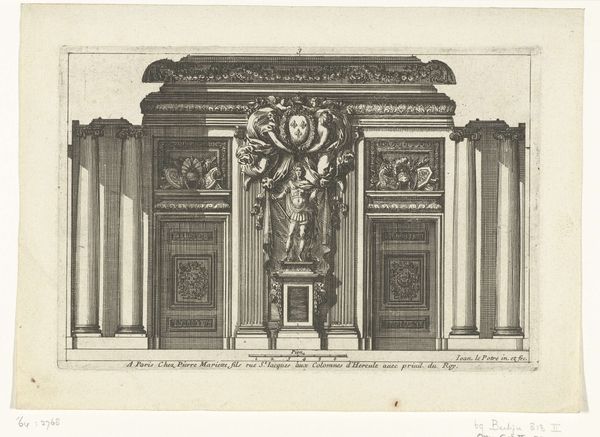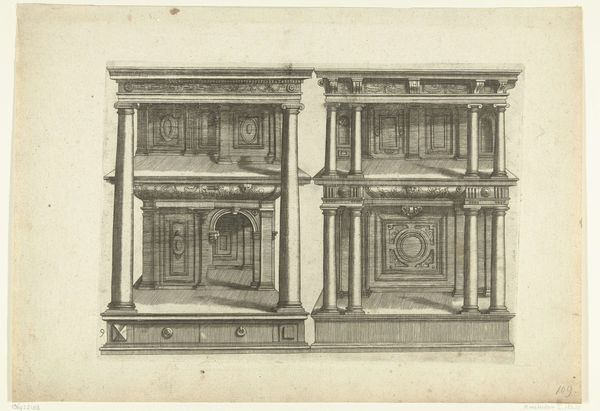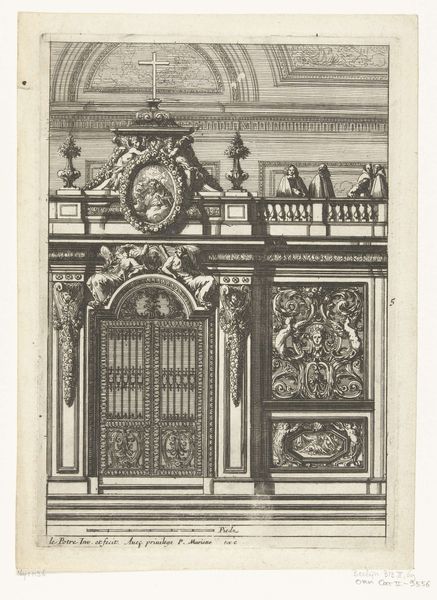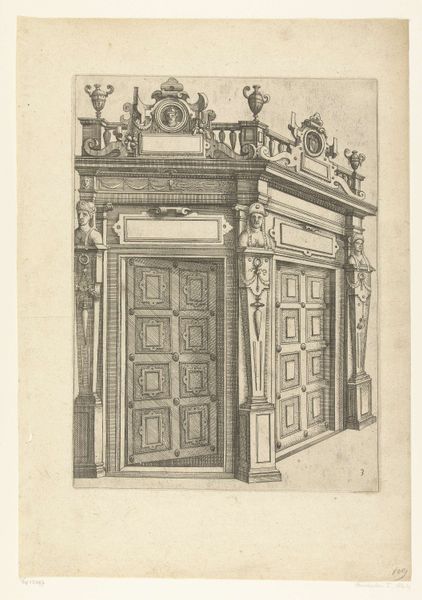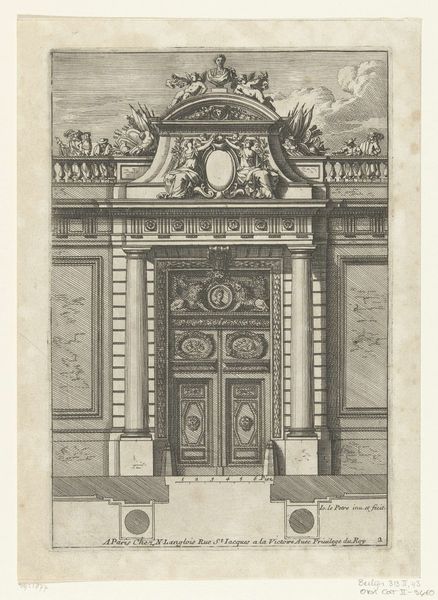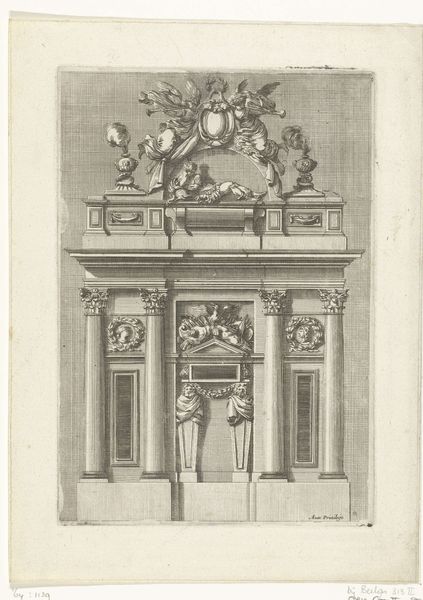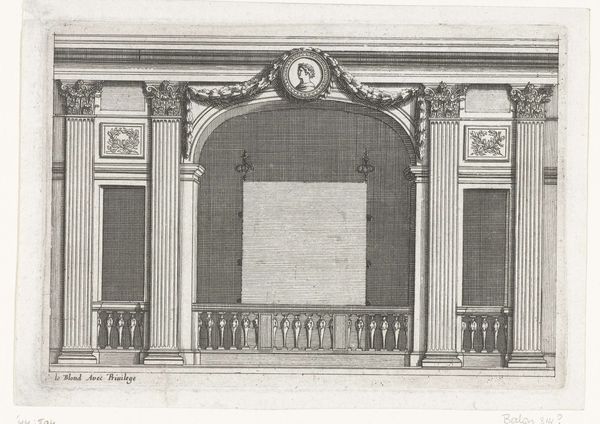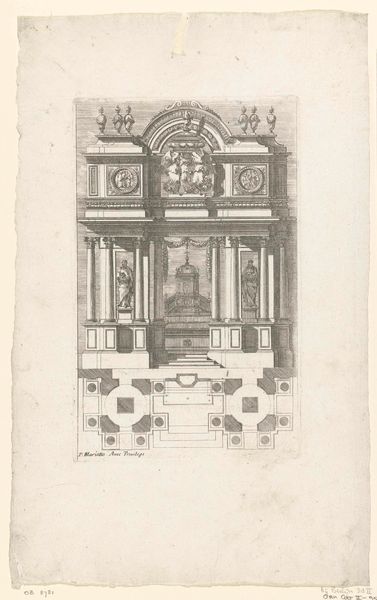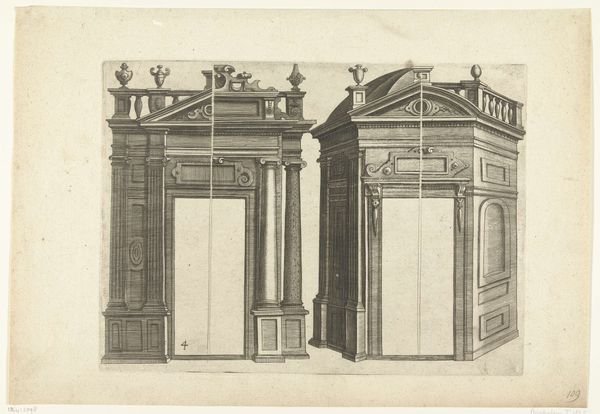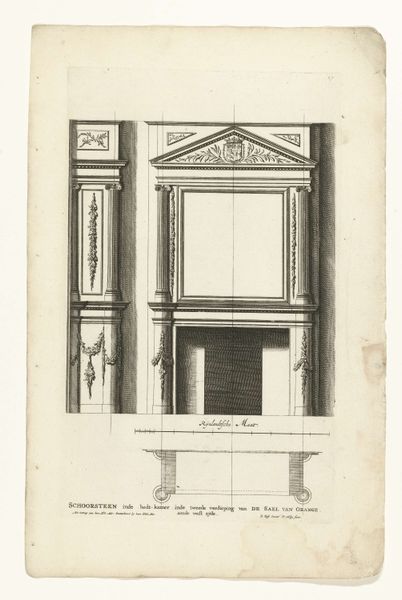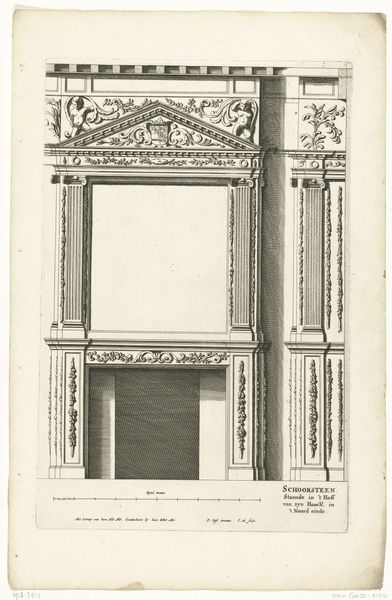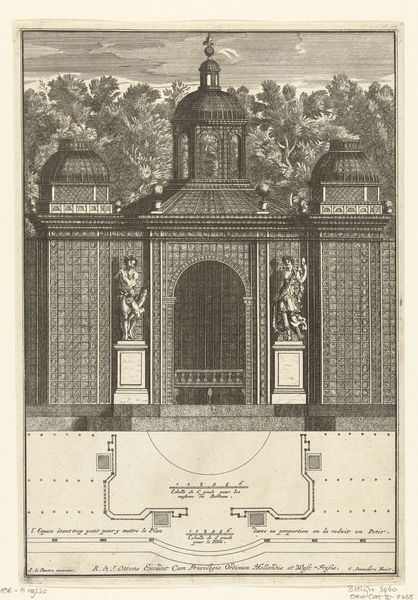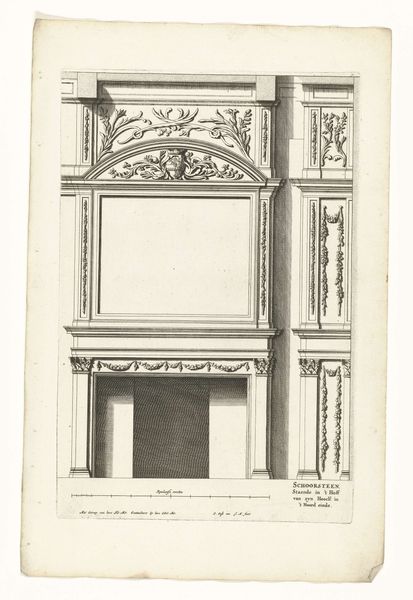
drawing, print, engraving, architecture
#
drawing
#
baroque
# print
#
old engraving style
#
form
#
line
#
engraving
#
architecture
Dimensions: height 149 mm, width 235 mm
Copyright: Rijks Museum: Open Domain
Curator: What an utterly captivating image—so precise and intricate. This print, made by Jean Marot sometime between 1629 and 1703, showcases an architectural interior. The title, “Muurindeling met Korintische pilasters," suggests its focus: a wall composition punctuated by Corinthian pilasters. Editor: Well, hello drama! At first glance, I'm hit by this… stage set feeling. Everything is so deliberately posed, so balanced and yet, somehow, slightly chilly. It’s a masterclass in control, I suppose. Curator: "Control" is a very astute observation. Consider the baroque style—it’s about dynamic movement, ornamentation, but within a highly structured framework. The artist uses line, so crisply rendered through engraving, to guide the viewer's eye around the composition, emphasizing symmetry and the classical elements like those pilasters. Editor: True, that symmetry is almost oppressive! It creates a feeling of grandeur, definitely. All those little details—the medallions, the drapes, those figures poised at the edges like bookends. What stories do you think are hiding in this rigid geometry? Curator: Exactly, what stories indeed? Think about the function of this space. “Alcove" it says, and the word itself suggests privacy, intimacy. The architectural elements would have conveyed wealth, status, perhaps also alluding to power or control over private life. Editor: I love how it captures an aspiration to permanence. Yet prints themselves are so… fleeting. There’s an odd tension in that, isn’t there? Like capturing a dream of timelessness on a scrap of paper destined to fade. Curator: Indeed. So much Baroque architecture only exists now in images, in these representations, and that adds a poignant layer of significance to the work, because of that double temporal aspect, of representation itself. Editor: And this is what's fascinating, and lasting about the Baroque--the grandeur is tempered by awareness of how delicate this permanence really is! I shall look differently on walls from now on.
Comments
No comments
Be the first to comment and join the conversation on the ultimate creative platform.
